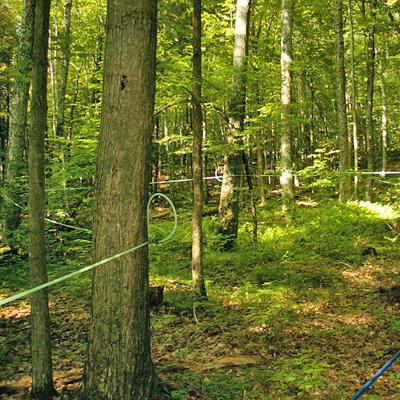Project Overview

NSRC researchers compared abundance and impacts of insect and disease pests between traditional management (90-100% sugar maple) and ecological management (25% of the basal area non-sugar maple). At nine sites (three each in USDA plant cold hardiness zones 3, 4, and 5), researchers quantified pear thrips, maple leafcutter, sugar maple borer, maple trumpet skeletonizer, maple anthracnose, and eutypella canker incidence. Researchers estimated stand health based on tree crown transparency ratings. They determined carbon sequestration using a USDA carbon calculation tool. Researchers also surveyed sugarmakers' attitudes towards non-traditional sugarbush management. Increased tree species diversity in sugarbushes using ecological management significantly reduced presence and impact of sugar maple insect and disease pests. Differences were similar across cold hardiness zones and sites but not always by year due to normal yearly fluctuations in pest populations.
Objectives
To determine whether ecological management (25% of basal area non-sugar maple) of sugarbushes affects prevalence of maple pests in sugarbushes.
Dataset Availability
There are no datasets associated with this project
Tags
Status - Completed
Start date: 2008-01-01
End date: Not available
Study Area

